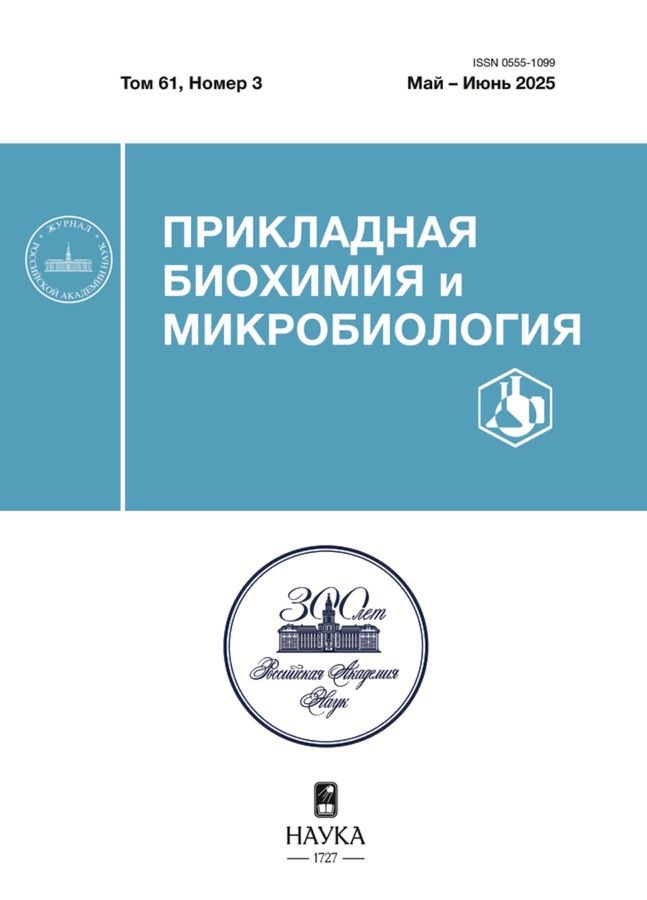Исследование влияния протеаз различных классов на функционально-технологические свойства изолятов белка гороха
- Авторы: Кравченко И.В.1, Фуралев В.А.1, Костылева Е.В.2, Середа А.С.2, Курбатова Е.И.2, Цурикова Н.В.2, Пшенникова Е.С.1, Бояринцева Т.В.1, Попов В.О.1, Федоров А.Н.1
-
Учреждения:
- Федеральный исследовательский центр «Фундаментальные основы биотехнологии» РАН
- Всероссийский научно-исследовательский институт пищевой биотехнологии — филиал Федерального исследовательского центра питания, биотехнологии и безопасности пищи
- Выпуск: Том 60, № 1 (2024)
- Страницы: 72-83
- Раздел: Статьи
- URL: https://cardiosomatics.ru/0555-1099/article/view/674577
- DOI: https://doi.org/10.31857/S0555109924010089
- EDN: https://elibrary.ru/HCHFTG
- ID: 674577
Цитировать
Полный текст
Аннотация
Исследовано влияние четырех ферментных препаратов — бациллолизина, агропрота, протозима и протозима С (Россия) — на растворимость, эмульгирующую активность, стабильность эмульсии, пенообразование и стабильность пены изолятов, выделенных из двух сортов гороха. Показано, что обработка ферментами позволяет повысить растворимость изолятов при рН 5 более чем в 7 раз, индекс эмульгирующей активности при рН 5 — в 1.5–2 раза, а при рН 6 — почти в 1.5 раза; индекс стабильности эмульсии при рН 5 увеличить примерно на 20%, а при рН 6 — в 1.7 раза (у одного из сортов); пенообразование при рН 5 — в 2.4–3 раза, а при рН 6 — в 1.8–3.7 раза; стабильность пены при рН 5 — на 25–33%, а при рН 6 — более чем в 1.5 раза (у одного из сортов). Полученные результаты позволили подобрать ферментный препарат (бактериальная щелочная сериновая протеаза) для улучшения параметров изолятов горохового белка, предназначенных для изготовления аналогов кисломолочных продуктов.
Ключевые слова
Полный текст
Об авторах
И. В. Кравченко
Федеральный исследовательский центр «Фундаментальные основы биотехнологии» РАН
Автор, ответственный за переписку.
Email: ink71@yandex.ru
Институт биохимии им. А. Н. Баха
Россия, Москва, 119071В. А. Фуралев
Федеральный исследовательский центр «Фундаментальные основы биотехнологии» РАН
Email: ink71@yandex.ru
Институт биохимии им. А. Н. Баха
Россия, Москва, 119071Е. В. Костылева
Всероссийский научно-исследовательский институт пищевой биотехнологии — филиал Федерального исследовательского центра питания, биотехнологии и безопасности пищи
Email: ink71@yandex.ru
Россия, Москва, 111033
А. С. Середа
Всероссийский научно-исследовательский институт пищевой биотехнологии — филиал Федерального исследовательского центра питания, биотехнологии и безопасности пищи
Email: ink71@yandex.ru
Россия, Москва, 111033
Е. И. Курбатова
Всероссийский научно-исследовательский институт пищевой биотехнологии — филиал Федерального исследовательского центра питания, биотехнологии и безопасности пищи
Email: ink71@yandex.ru
Россия, Москва, 111033
Н. В. Цурикова
Всероссийский научно-исследовательский институт пищевой биотехнологии — филиал Федерального исследовательского центра питания, биотехнологии и безопасности пищи
Email: ink71@yandex.ru
Россия, Москва, 111033
Е. С. Пшенникова
Федеральный исследовательский центр «Фундаментальные основы биотехнологии» РАН
Email: ink71@yandex.ru
Институт биохимии им. А. Н. Баха
Россия, Москва, 119071Т. В. Бояринцева
Федеральный исследовательский центр «Фундаментальные основы биотехнологии» РАН
Email: ink71@yandex.ru
Институт биохимии им. А. Н. Баха
Россия, Москва, 119071В. О. Попов
Федеральный исследовательский центр «Фундаментальные основы биотехнологии» РАН
Email: ink71@yandex.ru
Институт биохимии им. А. Н. Баха
Россия, Москва, 119071А. Н. Федоров
Федеральный исследовательский центр «Фундаментальные основы биотехнологии» РАН
Email: ink71@yandex.ru
Институт биохимии им. А. Н. Баха
Россия, Москва, 119071Список литературы
- Tesarowicz I., Zawiślak A., Maciejaszek I., Surówka K. // International J. Food Sciences. 2022. V. 2022. P. 6187441. https://doi.org/10.1155/2022/6187441
- Schlegel K., Sontheimer K., Eisner P., Schweiggert-Weisz U. // Food Science & Nutrition. 2019. V. 8. P. 3041–3051. https://doi.org/10.1002/fsn3.1286
- Meinlschmidt P., Schweiggert-Weisz U., Brode V., Eisner P. // LWT — Food Science & Technology. 2016. V. 68. P. 707–716. https://doi.org/10.1016/j.lwt.2016.01.023
- Yust M. M., Pedroche J., Millán-Linares M. C., Alcaide-Hidalgo J.M., Millán F. // Food Chemistry. 2010. V. 122. № 4. P. 1212–1217. https://doi.org/10.1016/j.foodchem.2013.11.053
- Yust M. M., Millán-Linares M. D. C., Alcaide-Hidalgo J. M., Millán F., Pedroche J. // Food Science & Technology International. 2013. V. 19. P. 217–223. https://doi.org/10.1177/1082013212442197
- Paraman I., Hettiarachchy N. S., Schaefer C., Beck M. I. // Cereal Chemistry. 2007. V. 84. P. 343–349. https://doi.org/10.1094/CCHEM-84-4-0343
- Neves V. A., Lourenço E. J., da Silva M. A. // Arch. Latinoam. Nutr. 1996. V. 46. № 3. P. 238–242.
- Higgins T. J., Chandler P. M., Randall P. J., Spencer D., Beach L. R., Blagrove R. J., Kortt A. A., Inglis A. S. // J. Biol. Chem. 1986. V. 261. P. 11124–11130. https://doi.org/10.1016/S0021-9258(18)67357-0
- Stone A. K., Karalash A., Tyler R. T., Warkentin T. D., Nickerson N. T. // Food Research International. 2015. V. 76. P. 31–38. doi: 10.1016/j.foodres.2014.11.017
- Asen N. D., Aluko R. E. // Front Nutr. 2022. V. 9. P. 852225. https://doi.org/10.3389/fnut.2022.852225
- Ivanova P., Kalaydzhiev H., Dessev T. T., Silva C. L. M., Rustad T., Chalova V. I. J. // Food Sci. Technol. 2018. V. 55. № 9. P. 3792–3798. https://doi.org/10.1007/s13197-018-3311-y
- Nielsen P. M., Petersen D., Dambmann C. // J. Food Sci. 2001. V. 66. № 5. P. 642–646. https://doi.org/10.1111/j.1365-2621.2001.tb04614.x
- Adler-Nissen J. Enzymic Hydrolysis of Food Proteins. // New York: Elsevier Applied Science Publishers, 1986. 427 р.
- Matoba T. // Agric Biol Ghem. 1972. V. 36. P. 1423–1443. https://doi.org/10.1080/00021369.1972.10860410
- Barac M., Cabrilo S., Pesiesic M., Stanojevic S., Zilic S., Macej O., Ristic N. // Int. J. Mol. Sci. 2010. V. 1. P. 4973–4990. https://doi.org/10.3390/ijms11124973
- Robinson G. H.; Domoney C. // Plant Physiol. Biochem. 2021. V. 158. P. 353–362. https://doi.org/10.1016/j.plaphy.2020.11.020
- Klost M., Drusch S. // Food Hydrocoll. 2019. V. 86. P. 134–140. https://doi.org/10.14279/depositonce-9553
Дополнительные файлы

















